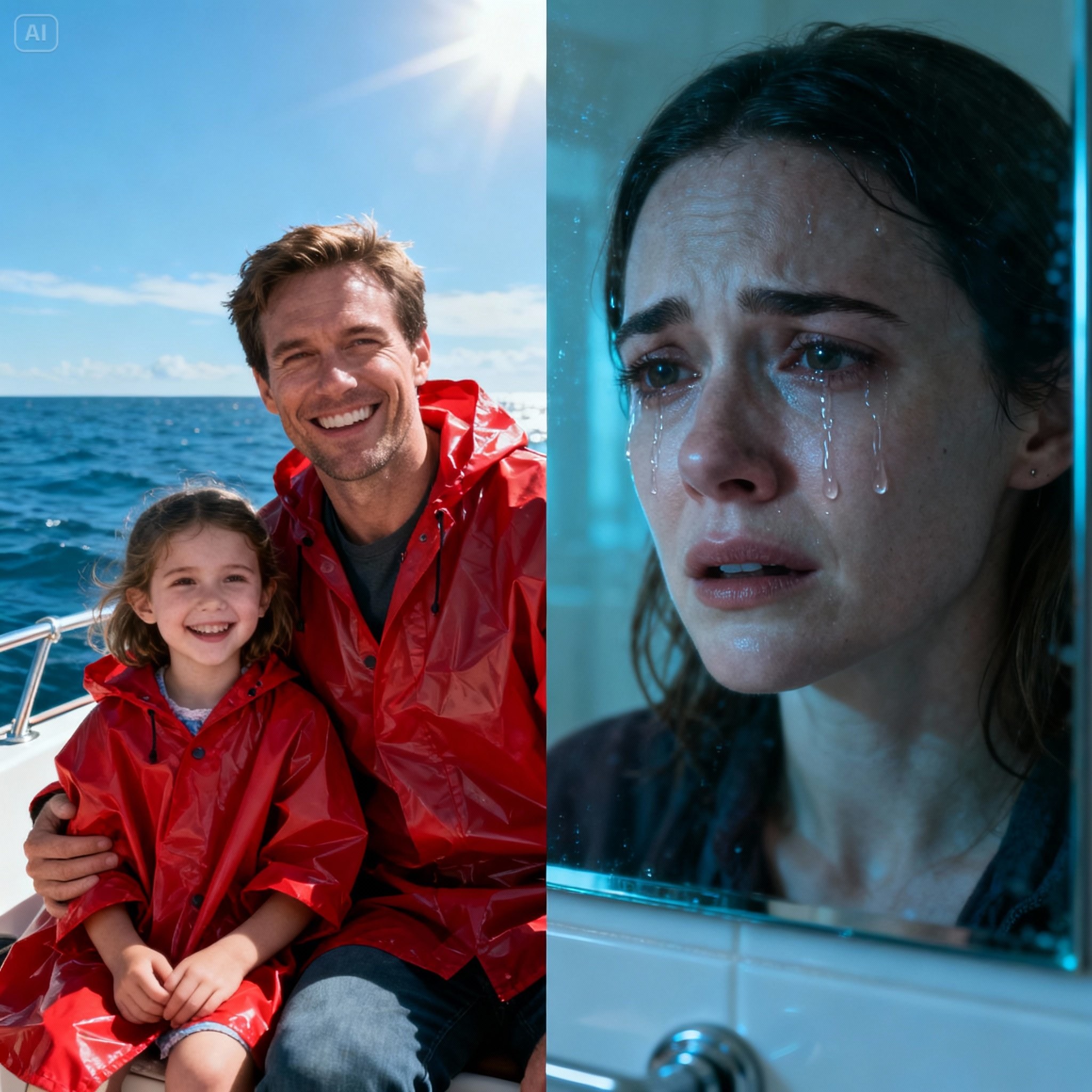When a father and his young daughter set out for what was meant to be a peaceful sailing trip, no one imagined it would end in a chilling mystery.
Days later, their boat was discovered drifting — food untouched, belongings neatly arranged — yet both were gone without a trace. For the next eleven years, family and friends lived with endless questions, while his wife mourned in silence, lighting candles each year, never knowing the truth behind their disappearance…
The morning was calm when Daniel Whitmore and his ten-year-old daughter Sophie set out from Port Townsend, Washington, aboard their modest sailboat The Seraphine. It was the first weekend of summer 2014. The plan was simple: a two-day sailing trip through the Puget Sound, father and daughter bonding over fishing and the sea breeze. Daniel’s wife, Emily, kissed them goodbye, promising pancakes when they returned.
When The Seraphine failed to dock by Sunday evening, Emily’s concern turned into panic. The Coast Guard was alerted, and within twenty-four hours, they found the vessel drifting near Whidbey Island. The sails were down, the radio was functional, and the cooler still held sandwiches and juice boxes. Sophie’s small lifejacket hung on a hook. Daniel’s phone, wallet, and keys lay untouched in the cabin. But Daniel and Sophie were gone.
Days became weeks. Search crews scoured miles of coastline, helicopters circled, divers combed the depths. No bodies were ever found. Investigators suggested a possible accident — perhaps Sophie fell overboard, and Daniel jumped in after her. But Emily refused to believe it. Daniel was a seasoned sailor; Sophie had been wearing her lifejacket that morning. Nothing added up.
In the months that followed, Emily clung to hope. She lit a candle each night by the living room window, whispering prayers for a miracle. The town rallied around her, though whispers soon replaced sympathy. Some said Daniel had debts; others hinted he wanted to escape his life. A year later, The Seraphine was sold for scrap, and Emily tried to rebuild what was left of hers.
Eleven years passed. Emily moved to Seattle, opened a small bookstore, and tried to live with the unfillable absence. She still kept Daniel’s wedding band in a drawer and Sophie’s pink rain boots by the door. On the eleventh anniversary of their disappearance, she received a letter postmarked from Santa Fe, New Mexico — no return address, only her name handwritten in a shaky scrawl she instantly recognized. Inside was a single sentence:
“I’m sorry, Em. I couldn’t tell you the truth.”….

Emily’s knees buckled.
She gripped the edge of her bookstore counter, the paper trembling in her hands. She hadn’t seen Daniel’s handwriting in over a decade, yet she would have known it anywhere — the slight leftward tilt, the careful loops.
It was his.
There was no question.
“I couldn’t tell you the truth.”
The words felt like a knife: familiar, intimate… and terrifying.
Her first instinct was to call the police, but something stopped her.
A quiet, bone-deep intuition.
He was alive.
And if Daniel was alive… then Sophie might be too.
Emily locked the store early, closed the blinds, and read the letter again and again until the ink seemed to blur. Why Santa Fe? Why now? Why speak after eleven years of silence?
She barely slept.
The next morning, she boarded a flight to New Mexico with the letter in her coat pocket and Sophie’s rain boots in her bag.
Santa Fe, New Mexico
The address wasn’t listed. The envelope gave nothing but the city.
Emily spent two days visiting post offices, asking clerks if they recognized the handwriting. Most shook their heads sympathetically. Then on the morning of the third day, a young postal worker said,
“That ink blot on the corner — that’s from our old sorting machine. We only have two routes that use it.”
Emily’s heart pounded.
“It came from the northside district,” he said. “Mostly rural. Lots of desert properties.”
It wasn’t much. But it was more than she’d had in eleven years.
The House in the Desert
The adobe home stood alone against the blistering horizon — no neighbors, no cars, only wind whispering across the sand. Emily approached the faded blue door, the letter clutched in her shaking hand.
She knocked.
No answer.
She knocked again, harder.
Then she heard it — the faint scrape of movement inside.
“Daniel?” her voice cracked.
Silence.
Then footsteps.
The door opened two inches. A single blue eye stared back at her — older, exhausted, rimmed in red, but unmistakable.
Emily gasped.
“Daniel,” she whispered. “Oh my God… you’re alive.”
He looked like a ghost wearing her husband’s face: hair streaked with gray, beard overgrown, sun-worn skin. But it was him.
He opened the door wider.
“I told myself I’d never let you see me again,” Daniel said, voice hollow. “But I don’t have much time left.”
Emily stepped inside, heart racing. The house was sparse — no family photos, no decorations. But on the table sat a single framed picture:
Daniel and Sophie.
Taken the morning of the sailing trip.
Sophie’s life jacket unmistakably bright pink.
Emily covered her mouth.
“Where is she?” she choked out. “Where is Sophie? Is she alive?”
Daniel looked away.
Then he said the four words that shattered the world:
“I didn’t lose her.”
Emily’s breath caught.
Daniel sank into a chair, shoulders shaking.
“I saved her, Em. Or at least… I tried.”
Emily felt the room tilt.
“What do you mean?”
His eyes filled with tears.
“Someone was after us. And I swear to you — I did everything I could. But in the end…”
He looked at her with a grief so deep it seemed bottomless.
“…they only wanted Sophie.”
Emily staggered back.
The room buzzed around her.
“What are you talking about? Who wanted Sophie?”
Daniel pressed a trembling hand to his forehead.
“Please, Em. Before you hear the rest… you need to know.”
He looked up, voice breaking.
“Our daughter is alive. But she didn’t grow up calling me her father.”





